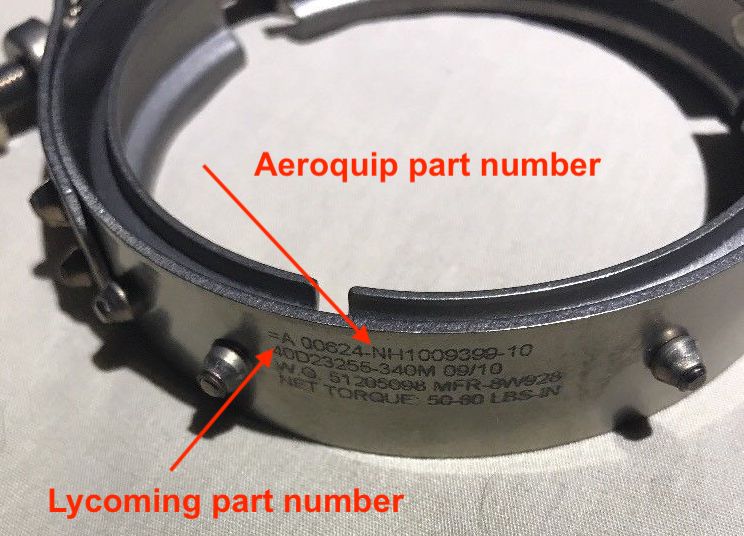Leaderboard
Popular Content
Showing content with the highest reputation on 06/08/2021 in all areas
-
Archilochus I’m going to have to disagree on the “better off by not practicing.” Turning back and using hope as a strategy is exactly what has led to the the high rate of stall/spin accidents and the high fatality rate associated with power loss on takeoff. I’m not advocating it, but I do have a friend I fly with who is a retired airline pilot, bush pilot and current Mooney owner (and a CFI) who likes to teach what I call the “oh sh*t” turn in which he pulls the power to idle, says “oh sh*t!” Then simultaneously drops flaps to full, unloads the wings and does a steep 180 degree turn. He can get the plane turned around in about 200’-300’. It is definitely NOT something I would have tried to do for the first time when close to the ground in an emergency when task saturated. Would I do it if the engine quit? I don’t know. It’s pretty dramatic but it also achieves a course reversal with minimal altitude loss, turn radius and distance traveled away from the runway. Would I do it without practicing and expect to survive? Absolutely not.4 points
-
Depends on what else has to be done to get the G5 installed. I'm sure some are being installed for the $1500 201Steve quotes, but none of many shops within 50 miles or so of the Denver area would do our airplane for that rate. The place we wound up actually having the work done a few months ago billed 27.5 hours of labor total, for the following invoice detail: Removed attitude indicator, mounted G5 instrument, plugged vacuum system lines going to attitude indicator, removed RH side C.B. subpanel, relocated Autopilot C.B. to lower bus bar, installed short throw 5amp CB for G5 installation, fabricated G5 wire harness and installed, replaced Garmin GTN650 P1001 Dsub connector, tapped into pitot/static system for G5 instrument, adjusted vacuum to 4.8 IN, performed system configuration. At $95/hour that's $2612.50 for the labor alone. I don't think we got a particularly good deal, but I don't think we got grievously gouged, either. A lot of the cost depends on the hourly rate for labor where you're having the installation done. Mooney speeds allowed us to consider shops further away with cheaper labor cost, but then you have to weigh that against the potential need to return to the shop in the event of a problem. We decided having the work done nearby (in fact right at our home field) was worth a premium. So in summary, the single G5 installation itself is only part of the labor. In our case there was re-work of the existing vacuum system (either you pay to remove it entirely or you pay to plug lines and readjust the vacuum regulator), a circuit breaker had to be relocated in order for the G5 breaker to be installed, and a Dsub connector on the GTN650 we used as a GPS position source for the G5 wound up needing to be replaced (your guess as to whether it "wore out" vs. the installer "breaking it during the work", it's essentially impossible to tell). Anyone who tells you what the installation cost should be without going into at least a little detail on ancillary work isn't giving particularly useful information. Finally, if you fly IFR, note that 91.411(a)(2) requires a fresh static system check "following any opening and closing of the static pressure system", and installing a G5 certainly counts. If you happen to do this around the same time your IFR static system check was coming due anyway, there's no extra cost. Otherwise, add a few hundred bucks for a static system check you would not have otherwise needed.3 points
-
What you really need to understand is any plane you buy is potentially thirty seconds from a overhaul. Great compressions the case cracks, great compressions it eats a valve, great compressions it busts a cam, and the list goes on. All a compression or leak test does is tell you it works today, not that it is good for tomorrow. People put way too much stock in them. Do not buy an airplane unless you are prepared to redo the engine (along with a lot of other stuff, let’s talk corrosion) at a moments notice. There are certainly ways to minimize the risk of purchase but no guarantees. It is a really expensive hobby make sure it is how you want dispose of a lot of money every year before you get on the bandwagon.2 points
-
This sounds a lot like air in the prop governor and prop. Did you try another run-up after flying? Did you allow time for the prop to react when doing the run-up? Just a quick guess. Mark2 points
-
What type of governor? Double check everything on the outside. Prop cable linkage travel of governor linkage Maybe a bad OH on the governor? I have had issues on OH governors before. Next the scarier options i.e. something inside the engine. Was the governor gasket installed incorrectly? hard to do but.... You reused the main bearings? Did the front main bearing spin during installation? This can happen and can partially block the oil passage from the governor. However, the engine would probably not spin over easily in this condition. Did someone leave a rag or paper towel in the engine somewhere and it is blocking the oil ports? Did you change the oil an check the finger screen and filter?2 points
-
If you know what you can do, you have the information needed to make proper decisions. We would all do well to do like I was trained for multi-engine departures. Before every takeoff recite what you are going to do if you have an engine failure. It goes like this: ”If the engine quits below xxx feet I will land straight ahead. There is a field to the right I will head there. Above xxx feet I will push the nose immediately to xx KTS and start a (L/R) turn back to runway xx. “ Thinking about it before you take off is infinitely better than trying to figure it out with a dead engine on the edge of a stall.2 points
-
I was out fooling around in my M20J last evening and tried the following experiment. I trimmed for a climb, clean, 85 KIAS, full power, at 2800 feet. Weight was about 2500 lbs. At 3000', I pulled the power, waited 3 seconds and began a 45 deg banked turn at 85 KIAS for a 270 deg heading change to simulate a course reversal and additional maneuvering. I did not put the prop in high pitch. All three attempts resulted in a 600' altitude loss. Why practice this? Because the maneuver is the entry to a spiral and the airplane has a strong tendency to diverge. It takes a surprising amount of back pressure to hold a constant airspeed and bank. However, too much back pressure tightens the spiral and will eventually lead to an accelerated stall. It takes a few attempts to get the feel. I would not say I am proficient at it after only three attempts. I would not want to figure this out for the first time near the ground with the windshield full of trees or houses. I regularly do 180 power off landings from pattern altitude at the downwind for fun. Those are a piece of cake compared to this maneuver. Skip2 points
-
Our hangar “condo” complex actually strongly encouraged a member to sell recently as he had no airplane but didn’t want to hang it up. For a couple years. We have also been inspected by the local airport authority. The situations you mentioned about car storage, etc are real and they would drive me crazy if my airplane was outside.2 points
-
No it will not as the STec30 is an analog system and the only type of AP that the SkyView can control is digital.2 points
-
If it’s rich at idle have you checked the idle mixture? At 1000 rpm, slowly pull the mixture to idle cutoff and note the rpm rise. 0-25 is about right. 50 works, more than 50 and mixture needs to be set.2 points
-
Okay here’s the verdict! I removed all of the valve springs on cylinders 2 and 4. When everything was laid out on my work table everything appeared to be normal. There were no cracked or weak springs and no signs of abnormal wear. When I went to reinstall all of the springs is where things started to get interesting. When I installed the intake valve spring on cylinder 4, I noticed there was a huge gap (2-3mm) between the intake valve keys. It appears that whomever overhauled the cylinders used an upper EXHAUST valve seat on the INTAKE valve. The center diameter of the exhaust valve seat is much larger than the intake seat. This caused the valve keys to jump around freely and cause excessive play in the intake portion of the valve train. I installed the new intake valve seat and the engine is quiet and smooth. Thank you guys for all of the help and insightful replies!2 points
-
I’m hoping they used a crappy paint on the prop. I have never seen a prop do that after any of my overhauls. The only time I have seen that is when I have been flying in rain a lot. As for cycling, I flew out of Buffalo for a number of years and even on the coldest days, the prop will always cycle. It may be a sluggish cycle but it will cycle. Something is not right. Hope it isn’t too serious. Sent from my iPad using Tapatalk Pro1 point
-
Actually....That’s part of the reason. Demand for consumer electronics skyrocketed in the last 16 months because a high volume were working from home/e-learning/not traveling, and automotive demands dropped due to less consumers buying/repairing vehicles because they were staying home more. So consumer electronics companies had to go into high gear and their component needs were addressed due to the dwindling automotive industry. Unfortunately the trickledown effect was that more raw materials shortages occurred due to production and staffing impacts. This will take a while to correct itself. edited to add: just in time manufacturing means that parts aren’t allowed/scheduled to arrive until they are needed. So if automotive manufacturers forecast a drop in production needs, they cancel orders for components. Who swooped in and took their place? You guessed it.1 point
-
A headwind/crosswind that becomes a tailwind does not “steal” airspeed unless one encounters a wind shear or substantial gust factor (and that’s normally very temporary). I also use full deflection slips from time to time. However, I have found that If one is already on the lower side of the speed spectrum it’s often often more effective to raise the nose and slow to just above stall and maintain just enough back pressure to keep the horn blaring. Like most airframes, the M20 will descend at a steep angle if held on the backside of the drag curve. It does not feel comfortable but it is effective.1 point
-
The airport authority at my airport just conducted inspections for fire hazards and to verify aviation uses of each and every hangar in our complex. Airport staff was accompanied by local firefighters. I was happy to see them taking this seriously!1 point
-
Sorry didn’t mean to come off stand-offish. I bet death valley can have the same situation in the winter.1 point
-
1 point
-
Maybe he couldn’t make the road if he didn’t, maybe with gear down he would have been in the trees? Pure speculation of course, but sometimes your better off gear up, ditching and muddy field comes to mind. I wonder how many remember to pop the door prior to touchdown?1 point
-
To close the loop on this, after a calibration of each RSM with their respective Aspen, everybody in the panel agrees with each other. Of course, my annual is due this month, I have a week of vacation scheduled to do some diving in Belize, and we just put our house on the market. So in my "spare" time, I will take the plane out and get familiar with flying again. Probably in July.1 point
-
1 point
-
This is a sort've nutzy cookoo topic. If you've got farm fields in front of you, why turn back? Remember, the most you're going to payout in an airplane crash is your insurance deductible. If you have a field you can land in, the Mooney will protect you. Keep it under control and you'll be just fine. What if you haven't a field? You still don't have to make a runway, the grass next to the runway is likely free of obstructions, at least formidable ones (I really don't care if I take out a landing light crashing the airplane). Hence you might only have to make a 180. Heck, in the accident animation that started the video there were parallel runways, he only needed 180. Me, I take off over neighborhoods. I don't care, I'm turning back. My thinking is not making it is no worse than landing straight ahead. I have parallel runways, so I only have a to make 180. And I usually take off over a farm field. If I can make that I'll call it a success. My job in a situation like this is to make certain everyone gets out OK. The airplane is expendable. I'll buy another. Mooney made lots. Am I practicing this? Of course not! Practicing at altitude with no surprise, no stress and no terrain is laughable. Practicing at low altitude is dangerous at best. Moreover, my engine might decide to puke at a different altitude than my "practice". I think the biggest thing we need to do as pilots is brief the takeoff. "What do I do if the mill takes a dump?". Whatever that is, do it as quickly, smoothly, and safely as you can when the time comes. I know I'm turning back from my home drone, I don't care. There just isn't a down side so long as I keep the speed up. Other runways may be different.1 point
-
Yesterday I was having coffee at the FBO and a guy stops by, inquiring about hangars. I told him to talk to the manager but there's a waiting list. Then I asked him what plane he flies and he says that he has classic cars and his buddy rented this hangar not so far from us, has a hoist etc and it's dirt cheap, and he wants the same... I told him that at our airport, owned by the state, the lease agreement requires that you store a plane there. So he left. But I have to admit that I got angry. With all those impediments to aviation, hangars and airports that are also federally and publicly funded for aviation should not be used for other purposes. I can't camp at a public school's yard, I can't park my car on the highway shoulder and just walk to my office, instead I have to take the exit and drive there, so you can't use just anything for just any purpose. There are already so many dormant planes. I wonder how many hangars are occupied by hoarders while many people rot on waiting lists to hangar their planes.1 point
-
The plastic bonder describes sticking to everything... Expect that it’s method of doing that is improved by having a rough surface... and be really good at getting in and holding onto the tiny crevices.... For skip’s discussion on why ABS loses the rigidity after being dissolved in a solvent.... there are a couple of reasons working together on that... If you don’t get all of the solvent out... it has a tendency to lubricate things and allow movement at the molecular level... ‘rubberized’ If you get all the solvent out, and the properties still aren’t right... there is a lot of entanglements among the polymer molecules that provide strength... dissolving them in solvent has a tendency to mess with the entanglements as well... Often injection molded parts like legos... don’t have much strength compared to sheet like materials... this is because the processes used for both are different... extruded strong thin sheet materials use high molecular weight polymers... injection molded parts need low molecular weight materials to flow into the fine mold cavities... Strength of the repair may benefit from a high molecular weight material... See if you can find some ABS sheet as a raw material... At this level of discussion... you can probably purchase some ABS pellets from a plastics supplier... and select the properties you want to have... and skip all of the extra heat history of extrusion and molding... PP thoughts only, not a plastics repair guy... or chemist... Best regards, -a-1 point
-
I sold a case to CSI in Sand Springs, Ok about two weeks ago. It is already machined by them and ready to go.1 point
-
1 point
-
Another reason to get that gear up as soon as you lift off the runway. Poweroff 180s are done with the gear down which robs you of a ton of energy which is why you need to be so close to the airport at 1000 feet to make it. If I have to do a turnback, I'm waiting until the last possible second (if at all) to get the gear down.1 point
-
1 point
-
Ugh. This may not change your situation much. You’ll know for sure if the crank feels tight after everything is tightened up. I hope that significant case fretting has not yet occurred.1 point
-
You shouldn’t have too much of. a problem finding a mechanic to use owner supplied parts I woudn’t think. Finding parts can be a pain, one I’d rather not have to go through myself1 point
-
Note: unfortunately you can't compare your EGTs with others' EGTs. The EGT value "reported" by a thermocouple probe is highly dependent on the exact placement of the probes in the exhaust pipe, and that varies from airplane to airplane. It depends to a lesser extent on other factors that also vary between individual airplanes, and to an even lesser extent on variations in atmospheric conditions. Nobody worries about standardizing this, because the only utility of EGT is in understanding relative change from peak EGT. So while I understand your reason for asking about EGT values, it's just not going to be useful information. Focus on the other good advice you're getting here.1 point
-
I took the APS course live in Ada in 2007. I wanted to go deeper so I've spent a lot of time studying textbooks and technical papers which caused me to dredge up a lot of disused thermodynamics and chemistry (I'm an electrical engineer, not a mechanical engineer). This effort has given me an appreciation for how the George, Walter and John took a lot of complex information and distilled it down to a few simple concepts that we can get our minds around: ICP, Red Boxes, the relation between power and fuel flow when LOP, CHT limits, etc. ICP is a useful concept for understanding the combustion event, but there's not any practical operational value in it because you cannot measure it with the instrumentation available. As far as the red box, I think in terms of what can damage an engine. The engine is designed to structurally handle any peak pressure generated during normal operation so the pressure isn't the issue. The issue is heat. Air cooled aircraft engines are capable of rejecting more heat to the cylinder heads than the cooling systems can carry away. At high powers (above 75% in Lycomings and 65% in Continentals) the engines need very rich mixtures for cooling. Get inside the red box and the heads get too hot. The valves and spark plugs run the hottest, so there is a possibility of damage and possibly preignition. The high combustion temperatures can also set off detonation. So, if you do the big mixture pull, when generating high power, you will transit the red box and it is best to know where it is. If you are operating below 75%/65% you can forget about the red box as long as you are mindful of CHTs. LOP and ROP are really two different operating regimes. ROP, the power curve is fairly flat and the BSFC curve is steep as a function of mixture. LOP, the power curve is steep and the BSFC curve is fairly flat. This means that when ROP, you can vary the fuel flow over a wide range without much affecting power, but when LOP the power is a strong function of fuel flow. This is because the engine is essentially an air pump. When operating at a fixed MAP and rpm, it can only pump so much air. Maximum power comes at a slightly rich air/fuel ratio. Adding more fuel causes a small power drop off, but the important point is that there is enough fuel to use all the available air. Going LOP causes a nearly linear decrease in power because the engine is pumping all the air it can but there is not enough fuel to use it. So, the power LOP will be less than the power ROP for the same MAP and rpm. This was what I meant by there being less available power LOP. Internal combustion engines are fascinating and there are still a lot of things I don't know, so I enjoy reading everyone's posts because that helps me learn more. Skip1 point
-
1 point
-
Lets make sure we get you Jonny and Kevin to come to the Summit this year!1 point
-
I’ll also add that in 15 years of flying my F I have found that 120MIAS offers the best blend of cooling, visibility, climb and surplus airspeed. It works well enough at any weight but the airplane must be cleaned up.1 point
-
As someone who just had an engine out in my E model and made it back to the runway from the downwind to base turn, I would be surprised if you could make it back. However, I would still want to try to practice it at altitude. Granted, I had the gear down and the flaps at takeoff when I lost power at 1,100 feet AGL with the runway to my 5 O'clock but I ended up threading the gear between the runway end lights. Some fun details: Weight: Max Gross 2525 Runway DA: 2800 Type of failure: Excessively rich mixture at Idle, see my post What are your average CHT/EGTs for your IO-360-A1A - Vintage Mooneys (pre-J models) - Mooneyspace.com - A community for Mooney aircraft owners and enthusiasts Configuration: Gear down, Flaps Takeoff, 95 MPH at time of loss, Prop wind milling, 1,100 Feet AGL/ 2200 MSL Rate of Decent in the turn: 1800 Ft/min @ 105 MPH Rate of Decent on short final: 1100 Ft/min @ 90 MPH Total time between Engine failure and touch down: 27 Seconds Heart rate change: 11 BPM Adding to the event, the tower did not hear my emergency call, for all I know, I was so busy I may have forget to push the PTT or said it so softly that it was not clear. My wife and passenger did not even know we had lost the engine until we were counting the blades as they went by on roll out. On another note, love him or hate him Dan Gryder and his preaching of DMMS saved my bacon. Engine loss, unload the airplane, get DMMS, do not slow below DMMS until you have your point made. Also, coming from a flight test background, as soon as you land, start writing down what happen. Then about 2 hours later, on a clean sheet of paper start another new set of notes on what happen. Then do the same thing 5 hours later, then the next day, then 2 days later. After my incident I ended up 13 pages of notes for the whole event plus for the previous 5 interactions with the airplane. What I learned is I identified the identified the symptoms of my issue 11 flying hours previously when the airplane was struggling to idle on roll out after about 8 laps in the pattern on my 2nd check out flight. My CFI recommended to adjust the idle throttle. When my A&P performed this he told me their was only a 1/4 turn of adjustment left. This should have been a sign to check the idle mixture but we did not think anything off it. Until the event flight, everything had been at low temperatures and relatively low DA like 600 to 900 feet. With an effective DA of 3900 feet, power cut to idle at full rich likely caused the engine to flood out. Update: Turns out it was the flow divider had failed and allowed the fuel system to be pressurized with exhaust gasses at low fuel flows.1 point
-
1 point
-
1 point
-
@Ragsf15e Did you ever figure this out? I am going to have to probably replace my cable due to a stupid mistake yesterday. Looking at AC 41.13, I think an 8 AWG or 6AWG wire will work for 50A at an estimated 8 feet length (I need to replace -147 as well). I really wish we had some more detail in the older parts manuals!1 point
-
Great pirep for Edison and Wetwingologists... Thanks for sharing! Best regards, -a-1 point
-
I agree with everything you said, but my F will definitely go faster than 120 on 9gph. Have you tried LOP at ~8,000’? You should be close to 140+ and 9gph.1 point
-
Several pounds of force... Depending on the weight of the elevator... Where the trim is set... and how well the springs are working... Good luck with the healing process... How is knowing the force on the yoke going to assist you? Are you currently stuck in the plane, and need to get out? Best regards, -a-1 point
-
Do what the above two guys said. Your takeoff and cruise cht/egts are pretty close to mine (within about 20 degrees cht and 30-50 degrees egt).1 point
-
Nitpick: the G5 is only certified primary for AI, DG, and TC. The fact it happens to display ASI and ALT (and VSI) data as well is ancillary. That data is legally just "backup" for your existing certified ASI/ALT, so you can't remove those legacy instruments when you install, say, dual G5s. The GI-275 has broader certification. But it's unclear to me if a single GI-275 running in an EFIS mode meets the requirements for all of AI/DG/ASI/ALT, or if you have to have multiple GI-275s in various modes.1 point
-
Fault Modes and Effects Analysis (FMEA) was part of all system, software, and hardware engineering when I was developing avionics at Honeywell for Boeing airplanes in the early 90s. Their training at the time was quite good. It just takes discipline and thoroughness and a consistent strategy to make things very good and manageable. At least, that was the lesson I got from it, and I used that training and approach throughout my engineering career with, I think, very good results and much better output than I would have had otherwise. Whenever I see something like this I just think somebody dropped the ball somewhere in the development process, and the review and testing processes were insufficient to catch it. But, that seems to have been an evolution in development processes in the last thirty years, as evidenced also by the 737 Max issues, which I don't think would have been possible in the previous environment. Now we have things like Agile, which seems to be pretty much the opposite approach to designing for reliability. Reliability does cost money in development time and testing, but not doing it can cost more in the longer run. Management is often pressured for the shorter term benefits.1 point
-
1 point
-
On the IO-360 I think it's more on the order of 1 to 1.5 GPH which would be 10 - 15% for a given power. However, just saving gas (money) is not the only reason to run LOP... 1. The obvious, save money. 2. Safer. The engine makes much less CO when LOP than it does ROP so we are much less likely to succumb to CO poisoning if our exhaust system has a leak. 3. Better for the environment. Each gallon of gas I save is that much less crap I'm dumping into the air and a lot less CO2 I'm adding to the air too. 4. Better for the engine. I'm much less likely to get deposits on my exhaust valves and spark plugs so I'm much less likely to develop morning sickness or a fouled plug. That improves my dispatch reliability. Not having to fix those problems also saves money. 5. Better range and payload. If I save 1.5 GPH, on a 4 hour flight that's 6 gallons or 36 pounds of payload I can carry that I might not be able to carry when ROP. Or, if I'm weight restricted which limits the amount of fuel I can put on board, it extends my range by that 10 - 15% listed above. And if you are the type that uses a really sharp pencil, if I want to land with an hour of fuel, that might be 9 gallons LOP or 10.5 ROP so that gives you another 1.5 gallons to burn enroute instead of leaving it in the tank at touchdown. That extra range would be in addition to the range extension due to the 10-15% lower burn. Or you could use it to give you another 9 pounds of payload capacity.1 point
-
Proof again that when the engine's running fine, but a gauge reads funny, check the gauge first.1 point
-
I got the Mooney into the shop three weeks ago and my A&P let me tackle it with his oversight. I did what N201MKTurbo said and removed the line between the servo and the fire wall, I blew it out and sure enough there was a decent amount of fuel in it. I then removed the line from the gauge to the fire wall and blew through it and there was fuel all the way up there. I finished up with the gauge and let it dry. Once it was back together everything works as it should I wanted to put some hours on it before replying to make sure it was repaired which it is, thanks a bunch guys. -Chase1 point
-
The sensor in the wing is probably a thermomister, so extra resistance from corroded connectors can throw of the readings. Find all connections, take them apart, clean or replace. Tom1 point
-
There needs to be one place on this forum that is devoted saving each other money. The exhaust V-Band clamp part number is Lycoming 40D23255-340M which sells for $1060 (http://www.aircraftspruce.com/catalog/eppages/lycomingcouplings.php) . However the Mooney service bulletin (http://mooney.free.fr/Mooney SB SI/283a.pdf) says that the equivalent Aeroquip part number NH1009399-10 can be used. Aeroquip makes the above part for Lycoming - they are the exact same part (see picture below). Lycoming names them as their vendor on this part on this service instruction: https://www.lycoming.com/sites/default/files/Assembly and Torque Procedures for V-Band Couplings.pdf). The Aeroquip part is $539 at Aircraft Spruce (http://www.aircraftspruce.com/catalog/eppages/engineclamps.php). LASAR has it for $544 (https://lasar.com/product/turbo-v-band-clamp-nh1009399-10/) Some shops are buying the Aeroquip clamp and selling it for the Lycoming price. $500 here and $500 there adds up.1 point

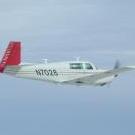

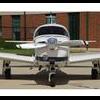
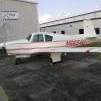



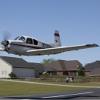
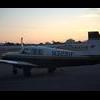


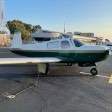


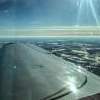

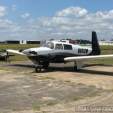
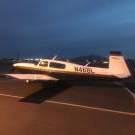

.thumb.jpg.44bc5ad17b44ec09b48bdca2a82f7a76.jpg)





